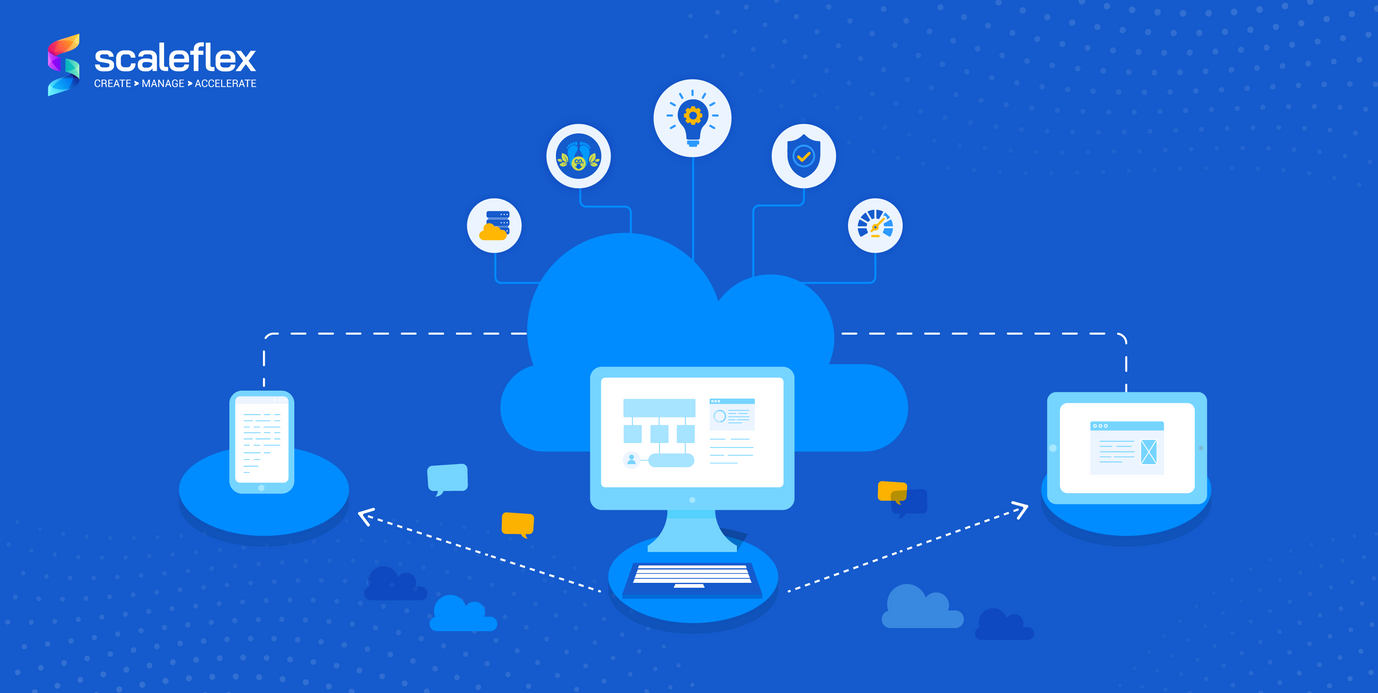How to thrive in the "new normal" of remote work?
The workday as we know it disappeared by the snap of a finger. Read more about how the new workspace nucleus can be beneficial for your company and employees and how to manage it effectively.

June seems like an excellent month to finally face the reality that 80% of our daily lives have changed.
Right?
Welcome back to Part 2 of these blog series on how to thrive in the new beats we are facing at this very moment.
How did your day change? Work-wise.
More digital workspace areas? Less physical contacts? Better and faster communication? Slower communication?
How about your motivation?
Would you agree that the era after Corona is bringing us face to face with global digital transformation?
The workday as we know it disappeared by the snap of a finger. The new reality came, facing many businesses to shift their working style by 180 degrees towards the virtual direction.
Some failed to adapt.
To quote Charles Darwin: "It is not the strongest of the species that survives, nor the most intelligent that survives. It is the one that is most adaptable to change."
In a webinar snap poll, conducted in April this year, 91% of attending HR leaders indicated that they have implemented ‘work from home’ arrangements since the outbreak, but the biggest challenge stems from the lack of technology infrastructure and lack of comfort with new ways of working.
“Remote-work success depends heavily on whether you trust employees to do their work even if you can’t see them,” says Aaron McEwan, Vice President, Gartner.
Cloud-based productivity tools and other employee communication technologies are increasingly prevalent in today’s workplaces.
To increase utilization and improve the effectiveness of remote-working tools and technologies, the ability of the workforce to quickly adjust to changes will be imperative.
It was, during this pandemic, and it will be for some time in the next years.

When organizations ran software on-premises, major changes occurred at the rate of every 3–5 years, and remote access to on-premises software required even more on-premises software like VPN, etc, but with SaaS, new features and functions (aka innovation) can be made available with ease.
The traditional on-premises work nucleus includes tools like Microsoft Office, local drives, email, and instant messaging.
The cloud-based new work nucleus, on the other hand, includes tools such as:
1. collaborative work management
2. workstream collaboration
3. smart meetings and smart drives
all of which foster agile behaviors.

The risks of a disrupted workforce are real.
One way to address the problem is the effective use of distributed teams. And if done right, and the distributed teams are Agile, data shows us that employees who work remotely remain connected, productive, and aligned, often actually more productive than they used to be.
Talking from the years of experience behind our SaaS CEO, here are the tips that help us stay connected in these virtual times.
Tip no.1 Virtual should still be visual!
Don’t fall into the trap of basing your remote communication only on audio calls.
Use VIDEO!
When seeing a person you are talking to building the trust, connection and rapport comes much more naturally. It also reduces the feeling of loneliness and social disconnection that may appear often in remote teams.
60% of the people I have asked via my social media profiles said that they would either go back or already went back to office presence jobs because of a lack of social interaction and feeling of community belonging.
Turning on your video as often as possible will bring the social interaction back. Don’t force it though. Just lay this as a new role, explain why you are doing it, and lead by example.
Tip no. 2 Cross team projects are a must!
Make sure to connect different teams across your company.
Doing projects that involve multiple teams not only strengthens their bond with your company/product but also contributes to them getting a sense of responsibility for the goals and the outcome of the project.
When working in a team with a goal, the sense of accomplishment and belonging also get much stronger.
This, in return, leads the brain to increase the dopamine secretion which makes your employees happier.

Happy employee = productive employee which is kinda the whole point.
One more benefit is the knowledge hub and good case practice sharing when you mix up the teams.
Our Marketing team recently took over the task distribution and tracking principle from our Dev team. We realized that their way of tracking tasks and challenges is more productive and clearer than ours and guess what, we found out about it while working on a joint project.
No surprise there.
Make sure to set clear KPIs and goals at the beginning and witness the magic happening.
Tip no. 3 Take advantage of communication tech and cloud workspaces!
Discord is getting more and more popular these days. It enables you to stay online and connected throughout the day.
This is not meeting based communication.
It’s more about hosting the open space for your employees to interact with each other.
This solves one of the main problems of working remotely which is the lack of fast communication.
Try implementing 3 hours mandatory audio discord presence. People can go and do different things, but while they work, they should be online ready to chat with other teammates.
Team usually gets used to it and the open space is available throughout the days, so you can even chat about other non-work-related stuff after hours.
This also leads to bonding between team members and, again, a sense of connection with the company itself.
Regarding the cloud workspaces, they are an excellent way to connect distributed teams while they are working together.

Both Cloudimage and Filerobot have this kind of workspaces in the cloud, which enables our clients’ teams (starting from Dev, Content production, SEO managers, Marketing reps etc.) to be super productive while working on their content upload and optimization.
Investing in cloud-based workspaces enables your team to be time-efficient and transparent and handles cross-functional challenges with ease.
Try it out and see how this works for you. Also, let me know in the comments section, I’m eager to know if this helps you in the same way it helps our customers.
This is it.
The new nucleus has started to exist.
Let’s rejoice in the freedom it has blessed us with an ability to have pajama days more often.
Need more tips? Check out our Linkedin page.
Part 3 is coming up in a couple of days and that one will bring everything you thought you knew about thriving in the times after the pandemics upside down.
Stay Tuned.
Stay Positive.
Stay Safe.
PS Make sure to subscribe to our newsletter below for monthly updates, news and case studies sent straight to your inbox! Be the first to know!



